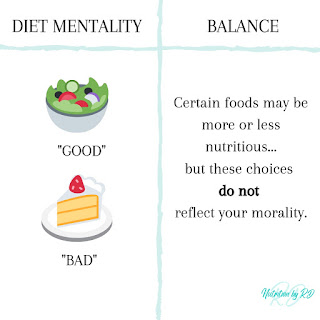By Dana Lemke
News
articles have touted that going vegan could be the single biggest way to reduce
environmental impact on the earth (Petter, 2020). The belief is that by decreasing
consumption of meats and animal products can decrease an individual’s carbon
footprint from food by up to 73% (Petter, 2020). I was curious what scientific
research is being conducted to verify these statements. The following results
are what I have found in research and what I am able to conclude. A study
Vegan Shepard’s Pie
 |
Shultz, Dana “Vegan Shepard’s Pie” The minimalist Baker October 12th, 2015.
PREP TIME 15 minutes
COOK TIME 45 minutes
Filling
· 1 medium onion (diced)
· 2 cloves garlic (minced)
· 1 1/2 cups uncooked brown or green lentils (rinsed and drained)
· 4 cups vegetable stock
· 1 tsp dried thyme
· 1 10-ounce bag frozen mixed veggies: peas, carrots, green beans, and corn
Mashed Potatoes
· 3 pounds yukon gold potatoes, partially peeled (thoroughly washed)
· 3-4 Tbsp vegan butter
· Salt and pepper (to taste)
Instructions
1.
Slice any large
potatoes in half, place in a large pot and fill with water until they’re just
covered. Bring to a low boil on medium high heat, then generously salt, cover
and cook for 20-30 minutes or until they slide off a knife very easily.
2.
Once cooked, drain,
add back to the pot to evaporate any remaining water, then transfer to a mixing
bowl. Use a masher, pastry cutter or large fork to mash until smooth. Add 3-4
Tbsp of vegan butter and season with salt and pepper to taste. Loosely cover
and set aside.
3.
While potatoes are
cooking, preheat oven to 425 degrees F (218 C) and lightly grease a 9×13 pan.
4.
In a large saucepan
over medium heat, sauté onions and garlic in 1 Tbsp olive oil until lightly
browned and caramelized – about 5 minutes.
5.
Add a pinch each salt
and pepper. Then add lentils, stock, and thyme and stir. Bring to a low boil.
Then reduce heat to simmer. Continue cooking until lentils are tender (35-40
minutes).
6.
In the last 10 minutes
of cooking, add the frozen veggies, stir, and cover to meld the flavors
together.
7.
OPTIONAL: To thicken
the mixture, add 2-3 Tbsp potatoes and stir. Alternatively, scoop out 1/2 of
the mixture and whisk in 2 Tbsp cornstarch and whisk. Return to the pan and
whisk to thicken.
8.
Taste and adjust
seasonings as needed. Then transfer to your prepared oven-safe baking dish and
carefully top with mashed potatoes. Smooth down with a spoon or fork and season
with another crack of pepper and a little salt.
9.
Place on a baking
sheet to catch overflow and bake for 10-15 minutes or until the potatoes are
lightly browned on top.
10. Let cool briefly before serving. The longer it sits, the more it will thicken. Let cool completely before covering, and then store in the fridge for up to a few days. Reheats well in the microwave.
Nutrition Information:
Serving: 1 serving
Calories: 396 Carbohydrates: 72 g Protein: 17.7 g
Fat: 5.3 g Saturated Fat: 1.6 g Trans Fat: 0 g
Cholesterol: 0 mg Sodium: 109 mg Fiber: 19 g
Sugar: 4 g
References
González-García S, Esteve-Llorens X, Moreira MT, Feijoo G. Carbon footprint and nutritional quality of different human dietary choices. Sci Total Environ. 2018 Dec 10;644:77-94. doi: 10.1016/j.scitotenv.2018.06.339. Epub 2018 Jul 4. PMID: 29981520
Petter, O. (2020, September 24). Going vegan is 'single biggest way' to reduce our impact, study finds. Retrieved November 16, 2020, from https://www.independent.co.uk/life-style/health-and-families/veganism-environmental-impact-planet-reduced-plant-based-diet-humans-study-a8378631.html
Ruini LF, Ciati R, Pratesi CA, Marino M, Principato L, Vannuzzi E. Working toward Healthy and Sustainable Diets: The "Double Pyramid Model" Developed by the Barilla Center for Food and Nutrition to Raise Awareness about the Environmental and Nutritional Impact of Foods. Front Nutr. 2015 May 4;2:9. doi: 10.3389/fnut.2015.00009. PMID: 25988137; PMCID: PMC4428432.
Shultz, Dana. (2015, October 12). 1-Hour Vegan Shepherd’s Pie. Minimalist Baker. https://minimalistbaker.com/1-hour-vegan-shepherds-pie/






